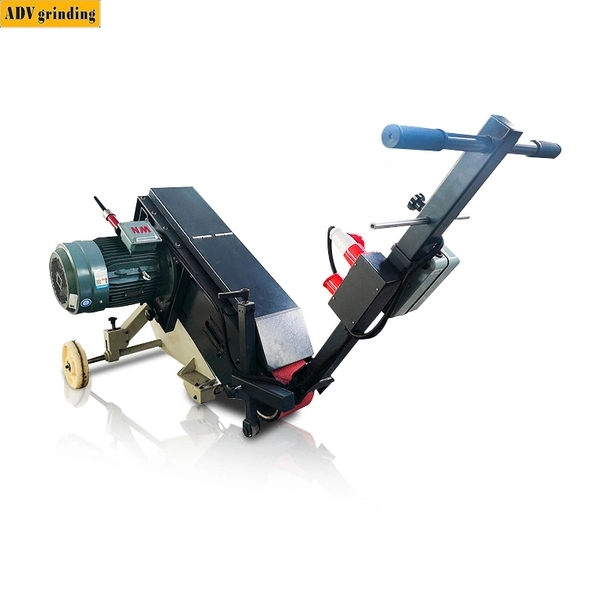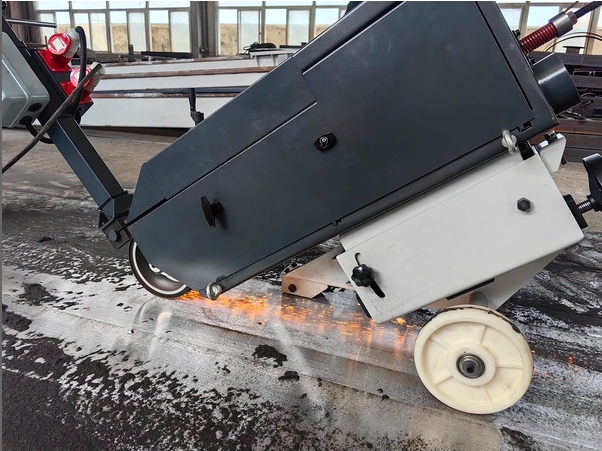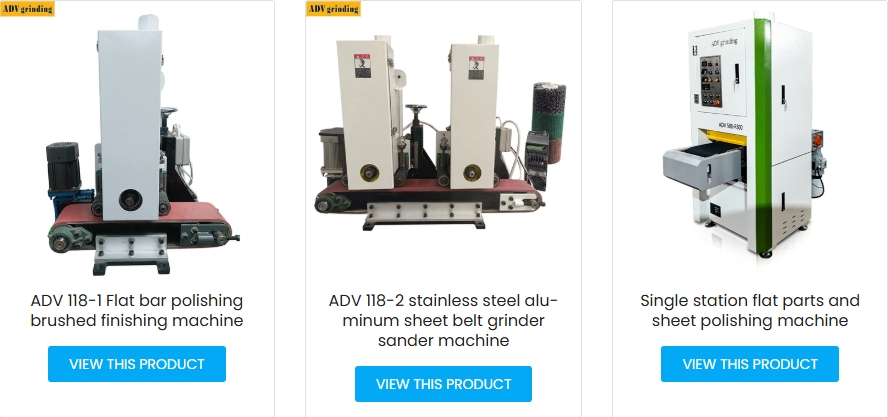In the realm of metal fabrication and finishing, achieving a smooth, flawless surface on steel plates is paramount. This pursuit of perfection often involves the use of specialized machinery. Two key tools in this process are the steel plate polishing machine and the hand push belt grinder. While both contribute to surface refinement, they cater to different scales, applications, and levels of automation. This article delves into the functionalities, benefits, and optimal use cases for each, providing valuable insights for businesses and individuals involved in metalworking.



Understanding Steel Plate Polishing Machines:
A steel plate polishing machine is a robust piece of equipment designed for efficiently and consistently finishing large surfaces of steel. These machines come in various configurations, ranging from semi-automatic to fully automated systems.
Types and Applications:
Automatic Steel Plate Polishing Machines are ideal for high-volume production, ensuring uniform finishes on stainless steel, carbon steel, and even preparing surfaces for further processing. They are widely used in kitchenware manufacturing for achieving mirror finishes, in elevator manufacturing for aesthetic appeal, and in the automotive parts industry for precise surface preparation.
Wet polishing machines incorporate coolants to prevent overheating and remove swarf effectively, crucial for achieving high-quality finishes on certain materials.
Dry polishing machines are suitable for less demanding applications where dust collection systems play a vital role.
Key Benefits:
Investing in a steel plate polishing machine offers significant advantages, including increased efficiency, consistent finish quality across large batches, reduced labor costs through automation, improved operator safety, and ultimately, a higher quality output.
Exploring the Versatility of Hand Push Belt Grinders:
In contrast to their larger counterparts, hand push belt grinders are portable and versatile tools designed for more localized and manual surface finishing tasks. Often referred to as portable belt sanders or used as angle grinders with belt attachments, these tools offer flexibility for various applications.
Applications and Features:
Hand push belt grinders excel in small area polishing, edge deburring, weld removal, and general surface conditioning.
Their features often include adjustable speed for different materials, various belt size variations for specific tasks, ergonomic designs for comfortable use, and sometimes dust extraction ports for a cleaner working environment.
They are invaluable for DIY projects and on-site work where larger machines are impractical.
Advantages and Limitations:
The primary advantages of hand push belt grinders are their portability, lower initial cost compared to automated systems, and flexibility for intricate work. However, they typically have a lower production rate and the consistency of the finish heavily relies on the operator's skill, potentially leading to fatigue over large areas.

Choosing the Right Tool: When to Use Which:
The decision between a steel plate polishing machine and a hand push belt grinder largely depends on the scale of operation, the required finish quality, and the budget.
For high-volume production requiring consistent and uniform finishes on large steel plates, an automatic steel plate polishing machine is the clear choice.
For smaller, localized tasks, intricate work, or on-site repairs, a hand push belt grinder offers the necessary portability and flexibility.
In some scenarios, the two tools can be complementary, with a larger machine handling the primary polishing and a hand push belt grinder used for touch-ups or detailed work.
For more information, click here: 116 SERIES BELT GRINDERS ,CONTACT US >>>





